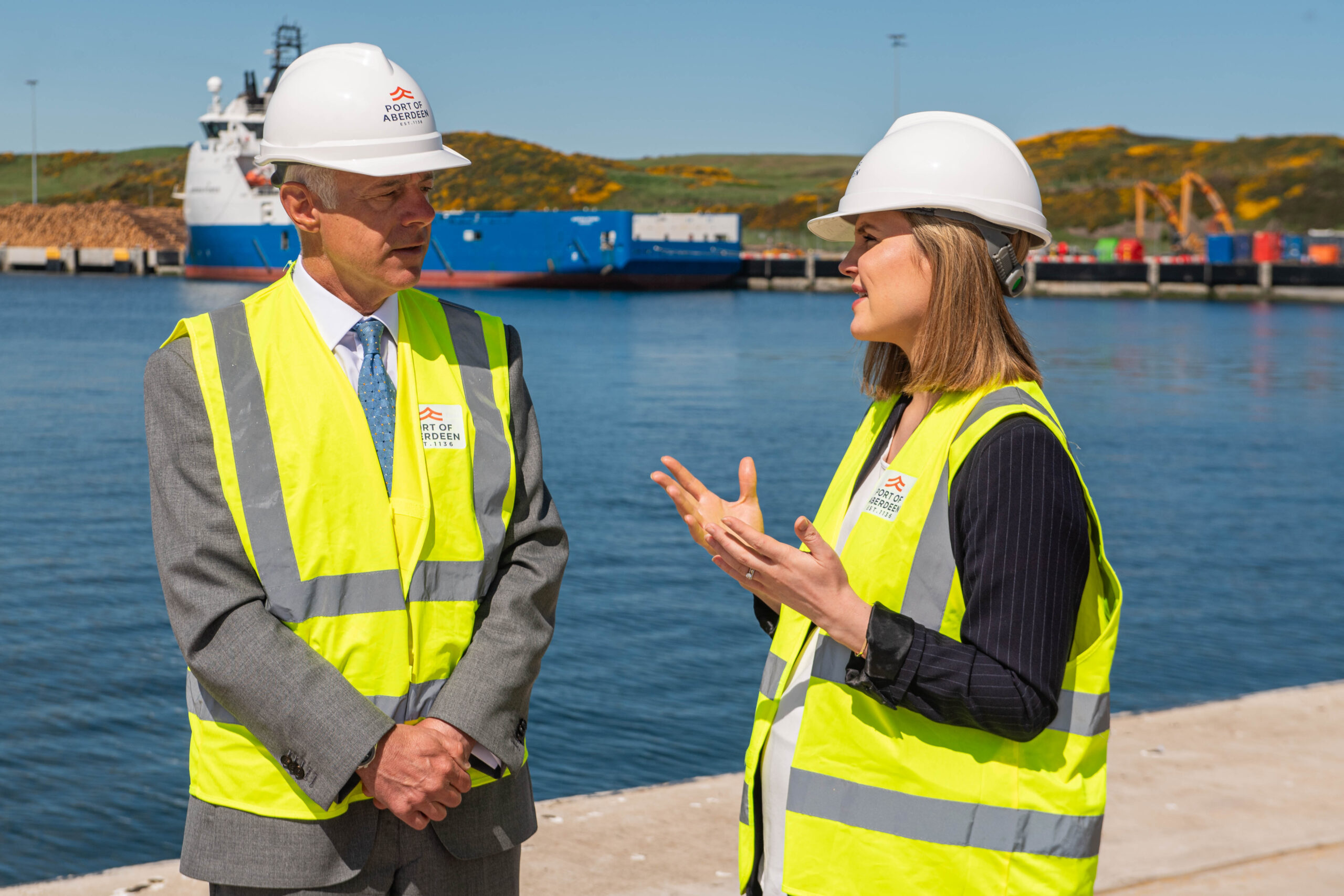Port of Aberdeen, the UK’s oldest existing business with the country’s newest harbour, shared its ambitious vision to become a national hub for floating offshore wind with Mairi McAllan MSP, Cabinet Secretary for Energy and Net Zero, during her visit today (20 May).
Touring the port’s £420 million Aberdeen South Harbour expansion, which officially opened in September 2023, Ms McAllan was presented with the port’s evolution into a world-class marine logistics hub for the offshore wind industry, alongside its ongoing support for North Sea oil and gas operations.
Ms McAllan was briefed on a planned £25 million project aimed at optimising South Harbour to meet the emerging demands of floating offshore wind, by deepening the eastern section of the basin. Port of Aberdeen is located within 100 nautical miles of 17GW of planned floating offshore wind, making it ideally suited to support ScotWind and INTOG floating developments.
This strategic upgrade will allow Port of Aberdeen and the region’s expert energy supply chain to manage hundreds of turbine integration and marshalling projects as well as longer term tow-in, tow-out major component exchange and maintenance.
The upgrade project recently progressed to Stage 2 ‘priority’ status in the Scottish Offshore Wind Energy Council’s Strategic Investment Model.
Cabinet Secretary for Energy and Net Zero Mairi McAllan said: “Scotland’s ports are crucial in realising our huge offshore wind potential and it’s fantastic to see Port of Aberdeen invest in Scotland’s future and our journey to Net Zero – further demonstrating the ambition of everyone involved in developing Scotland’s offshore wind sector.
“It will bring green jobs, skills and revenue to the Aberdeen area, while helping to ensure that our world-leading infrastructure facilities can deliver our offshore renewables revolution.”
Bob Sanguinetti, CEO, Port of Aberdeen, said: “Our significant investment in South Harbour means we are on the brink of becoming a national hub for floating offshore wind. With expansive laydown areas, the proposed ETZ on our doorstep, and 1.5km of quayside accommodating vessels up to 300 metres long, we are well-equipped for this next phase. Deepening the basin along Dunnottar Quay is the final step to becoming fully project ready.
“This will attract projects to the region on a scale not seen since the advent of the North Sea oil and gas industry. Government and industry investment in this crucial project will build on an existing strategic asset to deliver Scotland’s offshore wind ambitions.”
